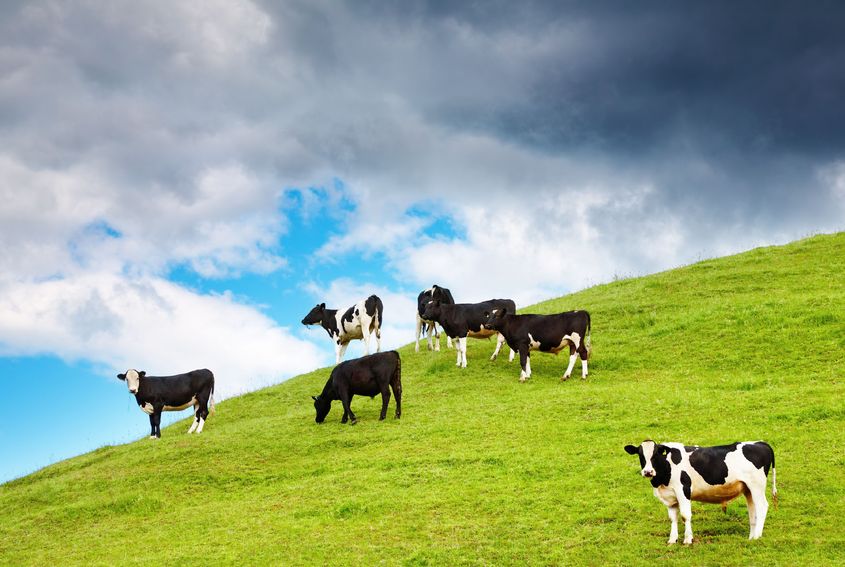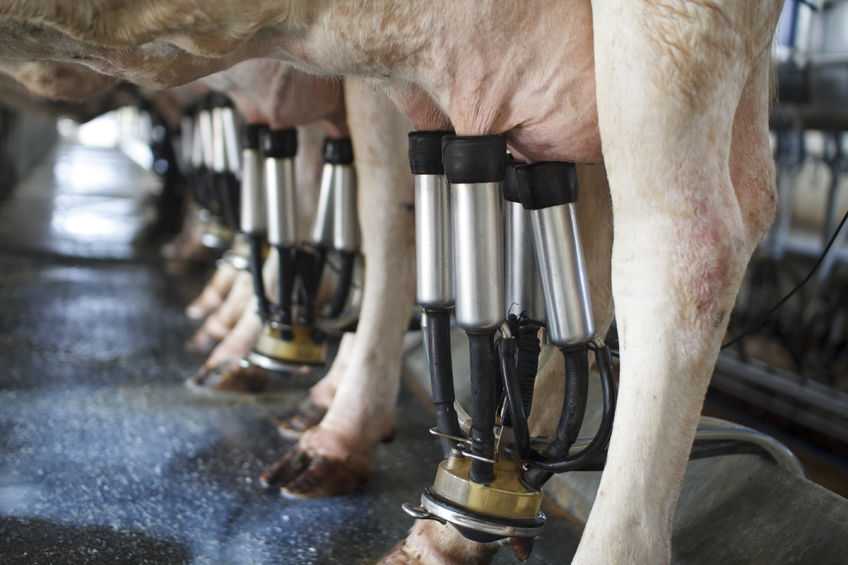
A six-year study of dairy farming in the south west of England concluded that there was room for improvement on a significant number of farms.
The study, which was conducted jointly by Duchy and Bicton College's Rural Business School in Cornwall and the estate agent Savills, involved analysing an identical sample of 63 specialist dairy farms in the south west from the farm business survey.
The analysis covered the period from 2010-11 to 2015-16 and results showed that there was a wide range of profitability amongst the sample farms.
“The distribution of average FBI (farm business income) per cow and by herd size over the period shows the wide range of results,” said the authors in the report.
“Some of this variation will be due to FBI being calculated before unpaid labour and notional rent. This will have a reduced effect on the larger herds where family labour cost is likely to be diluted by increased paid labour.
“However, the vast range of performance either side of the trend line cannot all be put down to FBI accounting – for example, 100 cow herds vary between a negative FBI to an average FBI of £100,000 pa (per annum),” they said.
“Similarly, in a 100 cow herd the FBI per cow ranges from below £0 per cow to over £800 per cow. As would be expected, increasing herd size does show a trend of increasing FBI.”
“Clearly these results show that there are opportunities to improve performance through best practice on a significant proportion of farms,” they said.
Investment decisions
The team conducting the study looked at investment decisions on farms, how much of farm business income was available as cash to the business, how much was re-invested back into the business and how much was taken as private drawings by the farming family.
The study looked at movement in or out of the business of private funds and changes in external funding sources, such as loans and overdrafts.
The analysis showed that, on a third of the farms, total private drawings over the six years of the study were greater than the cumulative FBI.
“There are often good reasons, including annual variations in income and corporation tax,” said the authors.
However, they said: “Farm businesses should have a quantified grip on all areas of cost with clear understanding of the impact of current cash flows on the long term sustainability of the business.”
They said: “The AHDB’s Vulnerability Index emphasises these findings, showing a stark reduction over the past three years in the proportion of dairy farm businesses which are deemed to have a sustainable long term future.”
'Supporting a larger farming family'

The authors said that net drawings were much higher on farms with younger working partners, suggesting that the business was “supporting a larger farming family.”
The report said that about 16 per cent of the farms in the analysis bought land in any particular year.
However, over the six-year period the owned area increased by just five hectares and rented area by only two hectares.
Some two thirds of the farms invested in new buildings and most bought some machinery.
Some 60 per cent made re-investment greater than depreciation. “This means around 40 per cent of the sample are investing less than the calculated machinery depreciation charge over the same period and their equipment asset value will have declined,” said the authors.
They suggested a number of possible reasons for this. They included an inability to afford re-investment in the business for the future. This may seriously impact on the long-term viability of the business and suggested a thorough appraisal of the business was required to determine the best way forward.
This may involve a radical restructuring, including ceasing milk production, they said.
Another possibility was that a farm was generating a reserve of funds to make a large investment later. Yet another was strategic disinvestment with a view to ceasing dairy farming, they said.
Farm performance
The researchers looked at whether there was any difference in farm performance according to the type of tenure.
“It is interesting to note that mainly tenanted farms are, on average, larger with more cows which have higher yields resulting in higher FBIs and more cash," reported the authors.
“Net investment in machinery/equipment was similar to the mixed tenure farms and, as would be expected, mainly tenanted farms saw very little land and woodland investment or capital appreciation.
“The generally higher performance of mainly tenanted farms suggests a greater focus on how capital in the business is used,” they said.
“It is also worth noting there are likely to be fewer opportunities for diversification within the tenanted sector, suggesting a complete management and investment focus on the core dairy business has improved the long term sustainability of the business.
“Alternatively, the mainly owner occupied businesses have tended to concentrate on building the capital base but care should be taken to ensure that servicing this additional debt does not undermine the core business.”
150 hectares
The study reported that the average size of the farm in the analysis was 150 hectares, with 161 cows producing an average per cow of 7,744 litres. Highest yielding operations produced 7,990 litres per cow.
The milk price across the sample averaged 29.3 pence per litre, with the highest price hitting 32.9 pence. FBI averaged £82,500 per annum and ranged from £53,000 per annum to £108,000 per annum.
The authors said that dairy FBI in the sample performed at a higher level, including milk price, than the average across England, but followed the same pattern of income changes.
The sample period covered two years of high milk price - more than 30 pence per litre - but two periods of lower prices. The milk price continued to decline into 2016/17, they said.
Herd and farm size for the south west farms gradually increased over the six years. There was a dip in production in 2012/13 as a result of a poor grass growing season, and the milk price rose to a peak in 2014/15, before a sharp decline in 2015/16.
